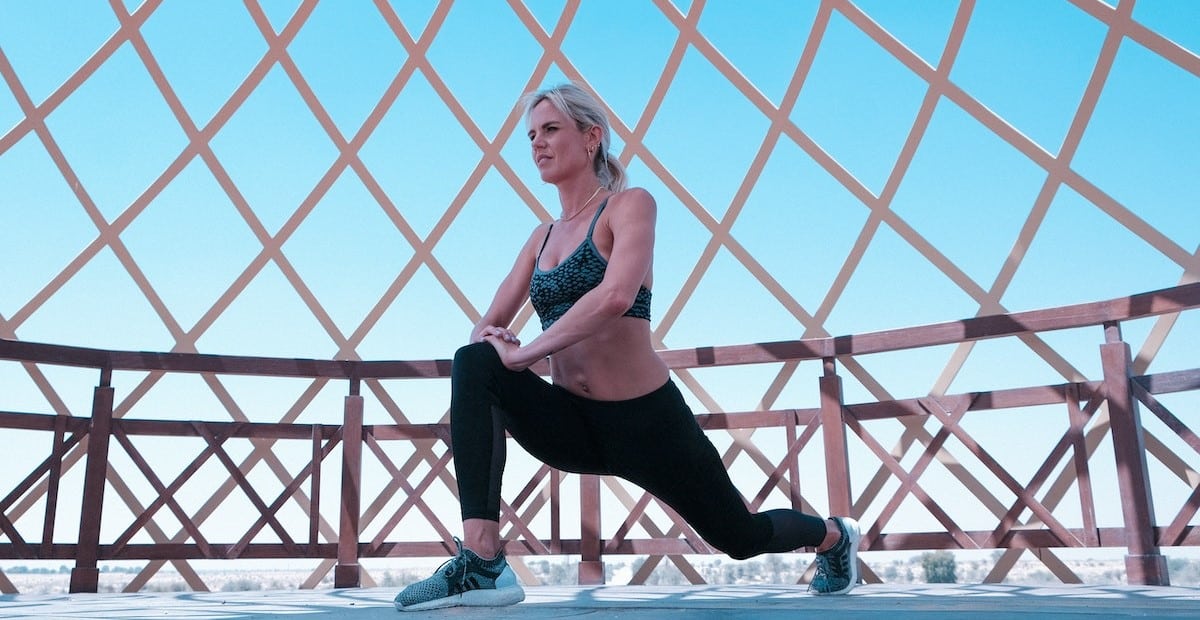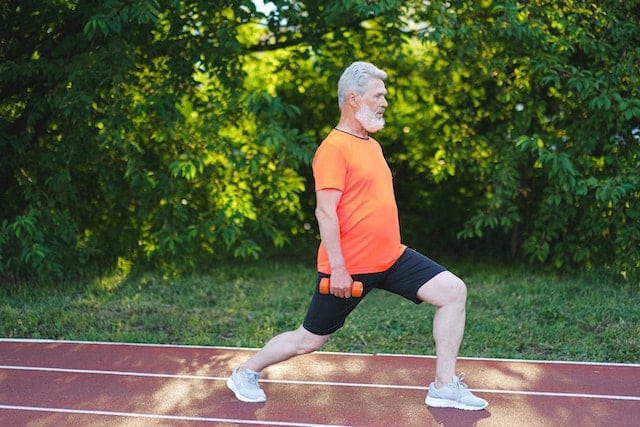
Contents
Lunges primarily work the large muscle groups in each leg, but they also strengthen your core muscles. How do you ensure proper form?
This is an important question – not only will incorrectly done lunges be ineffective, they can also lead to muscle imbalances and affect your core stability when doing other exercises. Properly done lunges are a fantastic functional exercise that can make leg day go much quicker. Keep reading for details of how to do the most common lunge variations the right way.
Forward lunge
This one’s the most basic. Stand with your feet hip-width apart and then step one leg forward. Ensure your hips are pointing forward. Keep your torso in an upright position but drop it down so that your other leg’s knee is bent. Your front knee should be directly above your ankle, with the back of that thigh parallel to the floor. Your back foot should be bent (as if your feet are in a pair of heeled shoes), and your front foot should be flat on the floor. If you repeat this movement without leaving the spot you’re in, you’ll be doing static lunges.
Walking lunges
Your starting position here is a forward lunge position. When you have held this position for at least 15 seconds, return to standing with your feet shoulder-width apart so that both feet are in line with your leading foot. Now, switch legs – step forward, this time with the other leg – the one that was your back leg last time. Congratulations, you’re now doing a walking lunge. Repeat this as many times as you can until you reach the end of the room you’re in!
Reverse lunge
Now that you’ve mastered the art of walking forward, it’s time to start walking backward. Why bother with this one when you already know how to lunge forward? Well, because although all lunges work the same muscles (your glutes, quads, and hamstrings), lunging backwards works these leg muscles differently. Here’s an example of how to do one:
- Starting with your feet hip-width apart, step your left foot backwards. Your right foot should stay where it is.
- Bend your rear leg down towards the floor, as you would with the forward lunge. Keep your upper body straight.
- Return to standing position.
Please only turn this reverse lunge into a reverse walking lunge if you’re absolutely sure that there is nothing and no one behind you.
Conclusion
Lunges can be a great way to work your lower body. Just made sure to keep your chest lifted, your hips facing forward, and your bent leg in line with the floor, and you will be lunging correctly.


FAQs
How do I make lunges an even more effective exercise?
Try adding weight by holding dumbbells to make lunges a core part of your weight training.
I love lunges! Are there any more lunge variations?
Yes – why not try a curtsy lunge, split squat, jumping lunges, or a lateral lunge?